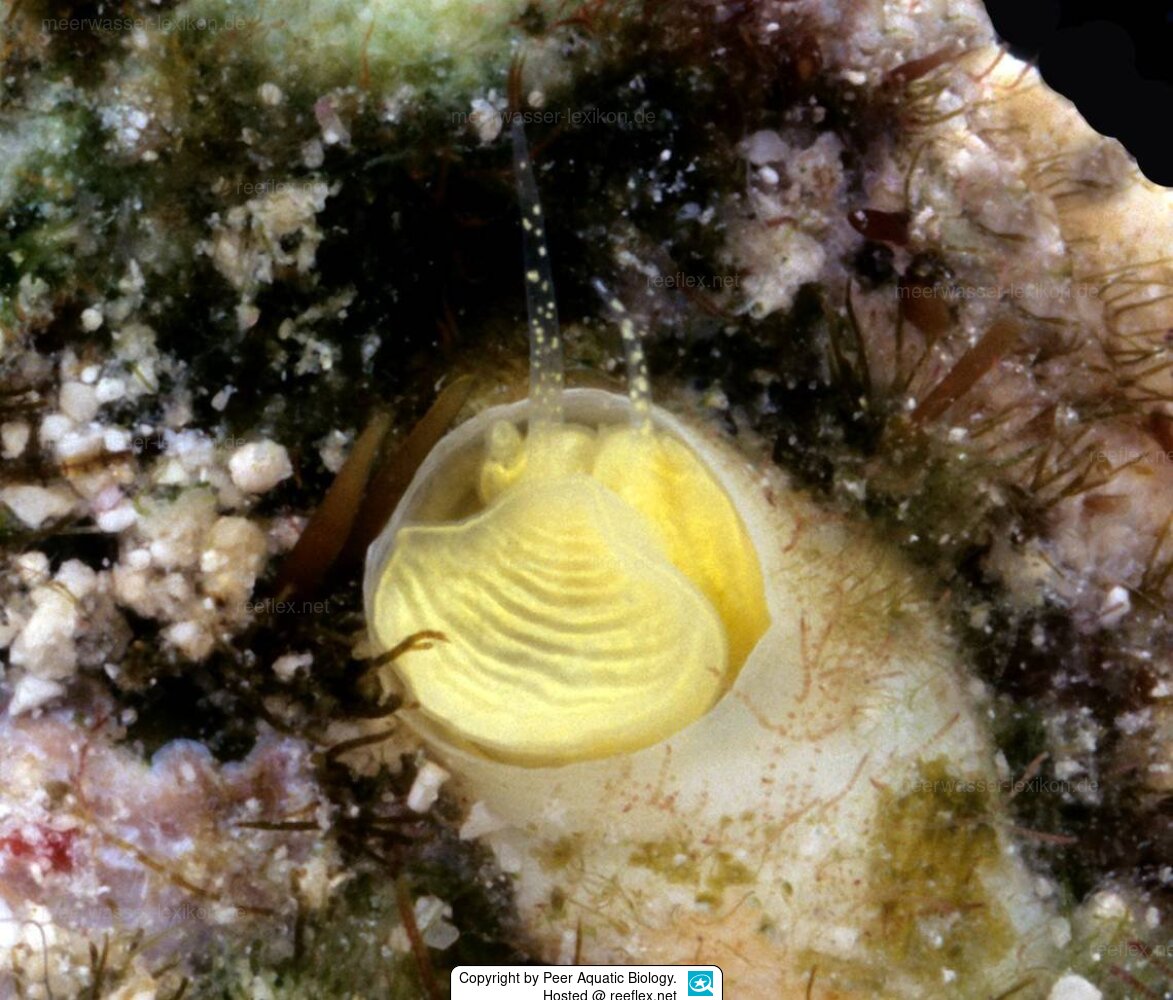Info
The worm snail Cayo margarita has so far only been reported from the Florida Keys.
Here, the worm snail lives on the surface of dead coral blocks, such as Orbicella faveolata (Ellis & Solander, 1786) and Acropora palmata (Lamarck, 1816), and on the underside of coral rocks that do not rest directly on sand.
Sometimes Cayo margarita is found together with Dendropoma cf. corrodens (d'Orbigny, 1841).
Live specimens have been observed in patch reefs and outer barrier reefs.
Cayo margarita shares its overall bright, “neon-like” appearance throughout the head-to-tail region and the “stacked half-moon” pattern of the pedal plate with Cayo galbinus, which has a greenish instead of yellow coloration. Cayo refulgens differs in having a mottled white head-to-tail with thin yellow lines and a shell with longitudinal ribs.
Cayo brunneimaculatus has a brown-white body color scheme and also longitudinal ribs on the teleoconch whorls of the adults.
Phylogenetic analyses based on a combined mtDNA and nuclear data set support Cayo margarita and Cayo galbinus as sister taxa.
Cayo margarita also lacks the operculum! The bright yellow coloration is supposed to signal to potential predators that the snail will not taste good to them.
Etymology:
The generic name “Cayo” is the Spanish term for a small flat island in the Caribbean and surrounding regions, equivalent to “key” in Florida, “cay” in the Bahamas and “caye” or “cay” in Belize. Here, the term refers to the locations of the four currently known species of this genus, Looe Key in the barrier reef of the Florida Keys and Carrie Bow Cay in the Belizean reef.
Etymology:
The species name “margarita” is a reference to the bright lemon-yellow coloration shared by this species and the citrus-juice-based cocktail drink Margarita.
Literature reference:
Bieler R, Collins TM, Golding R, Granados-Cifuentes C, Healy JM, Rawlings TA, Sierwald P. 2023. Replacing
mechanical protection with colorful faces–twice: parallel evolution of the non-operculate marine worm-snail genera Thylacodes (Guettard,
1770) and Cayo n. gen. (Gastropoda: Vermetidae). PeerJ 11:e15854 http://doi.org/10.7717/peerj.15854
CC BY 4.0, open access
Here, the worm snail lives on the surface of dead coral blocks, such as Orbicella faveolata (Ellis & Solander, 1786) and Acropora palmata (Lamarck, 1816), and on the underside of coral rocks that do not rest directly on sand.
Sometimes Cayo margarita is found together with Dendropoma cf. corrodens (d'Orbigny, 1841).
Live specimens have been observed in patch reefs and outer barrier reefs.
Cayo margarita shares its overall bright, “neon-like” appearance throughout the head-to-tail region and the “stacked half-moon” pattern of the pedal plate with Cayo galbinus, which has a greenish instead of yellow coloration. Cayo refulgens differs in having a mottled white head-to-tail with thin yellow lines and a shell with longitudinal ribs.
Cayo brunneimaculatus has a brown-white body color scheme and also longitudinal ribs on the teleoconch whorls of the adults.
Phylogenetic analyses based on a combined mtDNA and nuclear data set support Cayo margarita and Cayo galbinus as sister taxa.
Cayo margarita also lacks the operculum! The bright yellow coloration is supposed to signal to potential predators that the snail will not taste good to them.
Etymology:
The generic name “Cayo” is the Spanish term for a small flat island in the Caribbean and surrounding regions, equivalent to “key” in Florida, “cay” in the Bahamas and “caye” or “cay” in Belize. Here, the term refers to the locations of the four currently known species of this genus, Looe Key in the barrier reef of the Florida Keys and Carrie Bow Cay in the Belizean reef.
Etymology:
The species name “margarita” is a reference to the bright lemon-yellow coloration shared by this species and the citrus-juice-based cocktail drink Margarita.
Literature reference:
Bieler R, Collins TM, Golding R, Granados-Cifuentes C, Healy JM, Rawlings TA, Sierwald P. 2023. Replacing
mechanical protection with colorful faces–twice: parallel evolution of the non-operculate marine worm-snail genera Thylacodes (Guettard,
1770) and Cayo n. gen. (Gastropoda: Vermetidae). PeerJ 11:e15854 http://doi.org/10.7717/peerj.15854
CC BY 4.0, open access







 Peer Aquatic Biology
Peer Aquatic Biology




